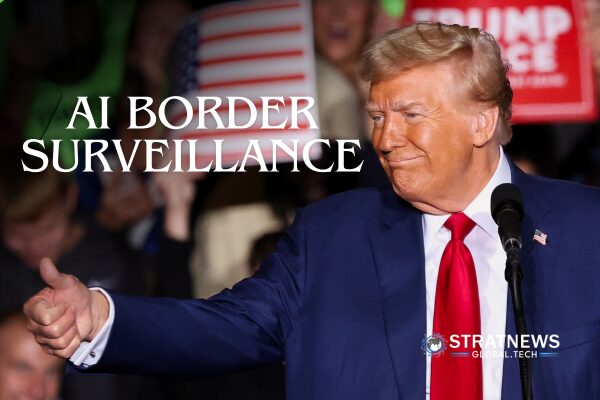Trump Administration Taps Spy Agencies and AI for Border Surveillance
The Trump administration directed two major intelligence agencies to use satellite surveillance at the US-Mexico border. The move is part of a larger push to strengthen border security and crack down on illegal immigration and drug trafficking.
Intelligence Agencies Mobilised for Border Monitoring
The National Geospatial-Intelligence Agency (NGA) and the National Reconnaissance Office (NRO), both under the Department of Defense, have been tasked with supporting the border mission. These agencies manage spy satellites and analyse imagery for defence and intelligence purposes.
The NGA said it formed a task force to coordinate support for the US border. The NRO stated it is working with the broader intelligence community and the Pentagon to secure national borders. These actions follow executive orders from former President Donald Trump aimed at curbing unauthorised crossings and deporting undocumented individuals—estimated at up to 14 million.
AI and Satellite Tech Powering a ‘Digital Wall’ & Trump
The effort is intended to expand existing surveillance tools, including drones and artificial intelligence. Sources say AI could be used to identify people or objects of interest in satellite imagery, similar to systems used in overseas military operations.
The long-term goal, according to sources, is to create a “digital wall” to enhance physical barriers along the border. AI-powered software could analyse data from satellite feeds, drones, and ground sensors, then flag suspicious activity to authorities. This integrated surveillance system would allow near real-time response to border threats.
Legal and Privacy Concerns Raised
The use of military-grade surveillance inside the United States raises legal and ethical concerns. While spy agencies are generally barred from collecting intelligence on US citizens, immigration enforcement is permitted within 100 miles of the border. This area includes major cities like San Diego and El Paso.
Experts have warned of potential overreach. Paul Rosenzweig, a national security lawyer, said agencies must ensure surveillance stays on foreign soil unless legally authorised. The Office of the Director of National Intelligence emphasised that all intelligence activities are conducted lawfully and with respect for civil liberties.
The extent of surveillance over US territory remains unclear. Both NGA and NRO declined to specify their operations, citing security concerns. The Central Intelligence Agency is not involved in domestic immigration enforcement, and no additional agencies have been confirmed as part of the initiative.
Defence Contractors Enter the Border Security Space
Defence contractors, including Palantir and Anduril, are working with the government to support the initiative. Palantir, known for its AI-powered Maven Smart System, helps the Pentagon analyse data and identify targets. Anduril has already deployed 300 autonomous sensor towers for US Customs and Border Protection.
These companies, along with Elon Musk’s SpaceX and others, have reportedly discussed forming a consortium to compete for major defence contracts, aiming to rival traditional Beltway contractors.
With immigration now ranked among top US intelligence priorities, the use of cutting-edge surveillance tech marks a significant shift in how the government approaches border control.
with inputs from Reuters


